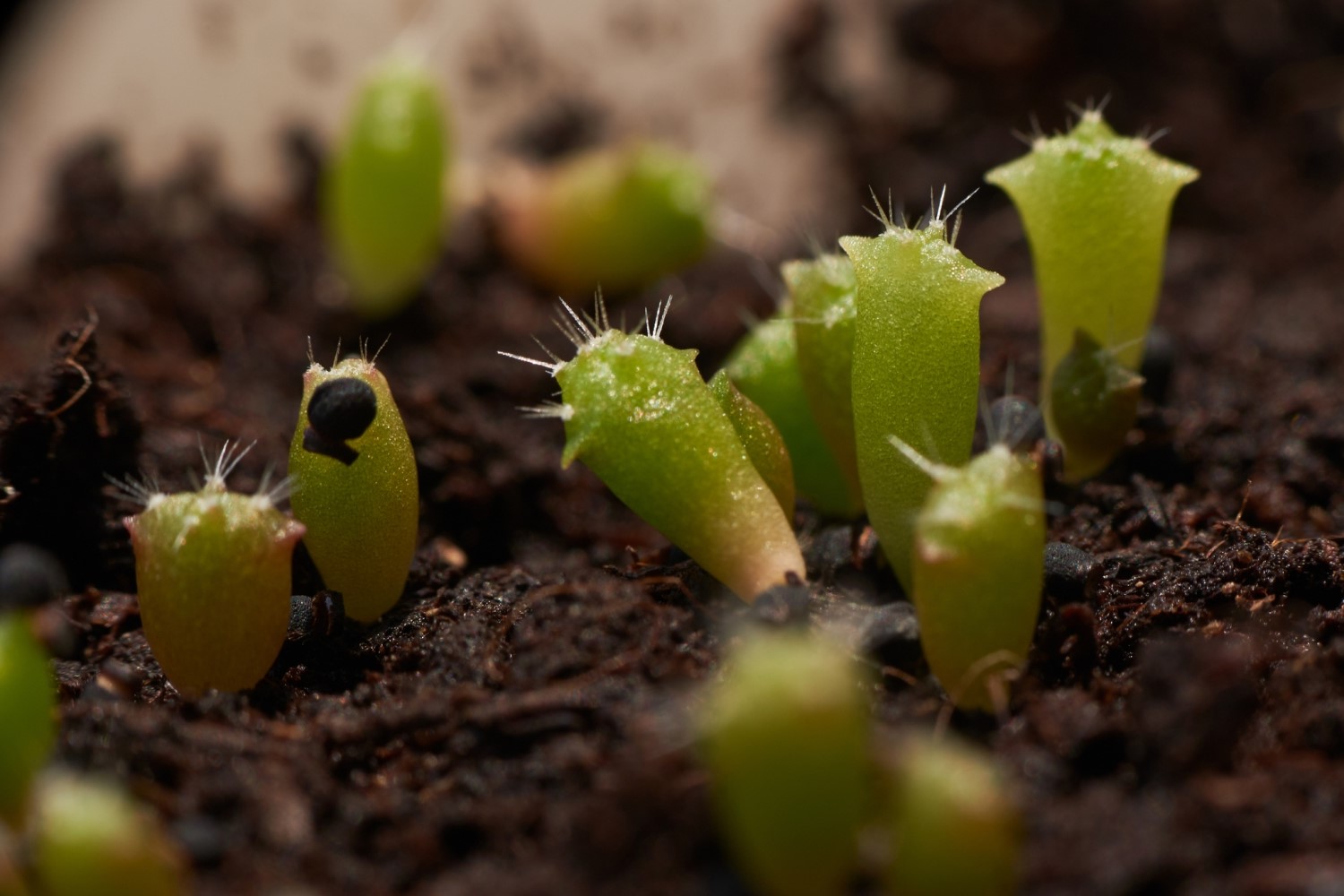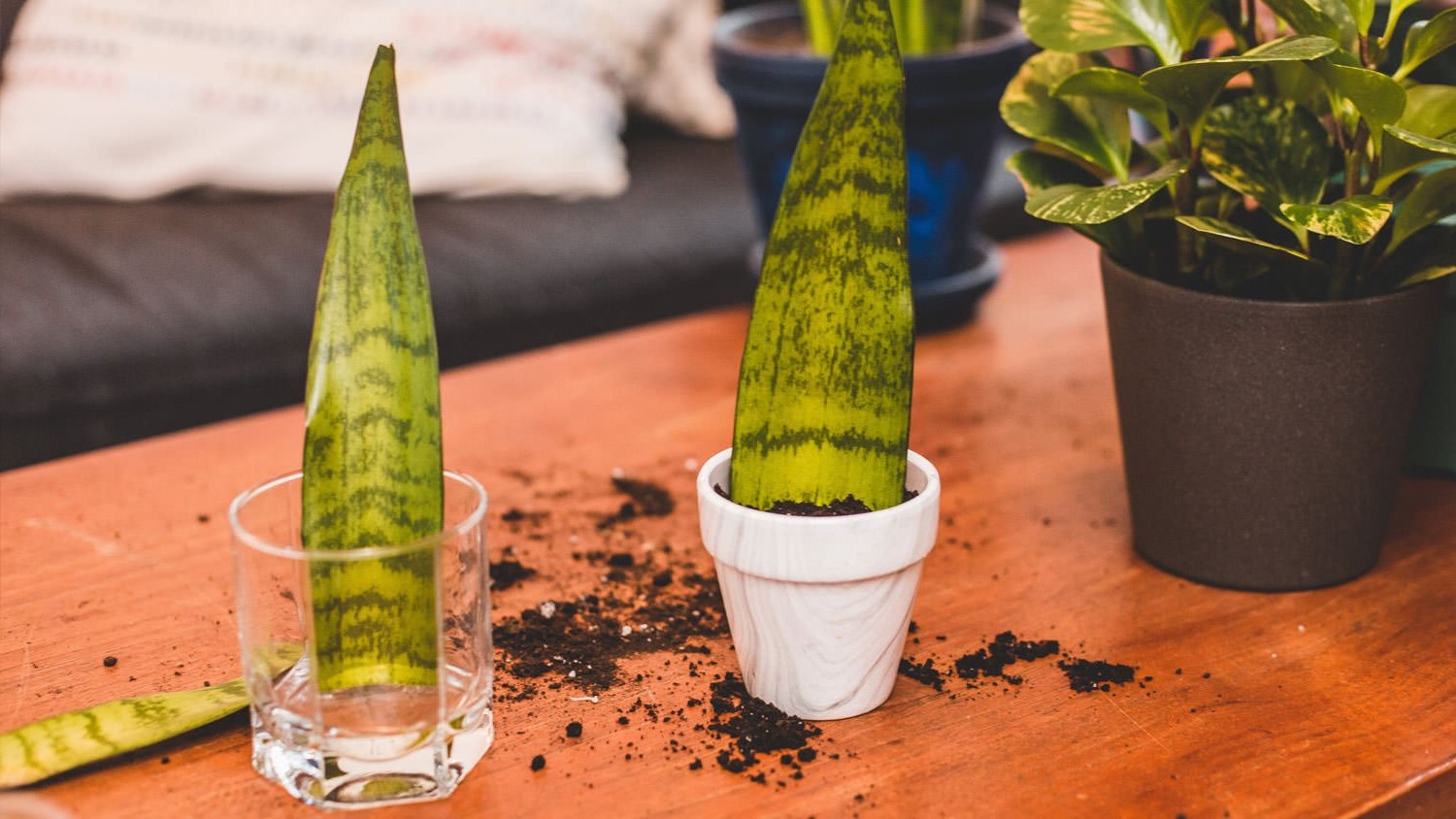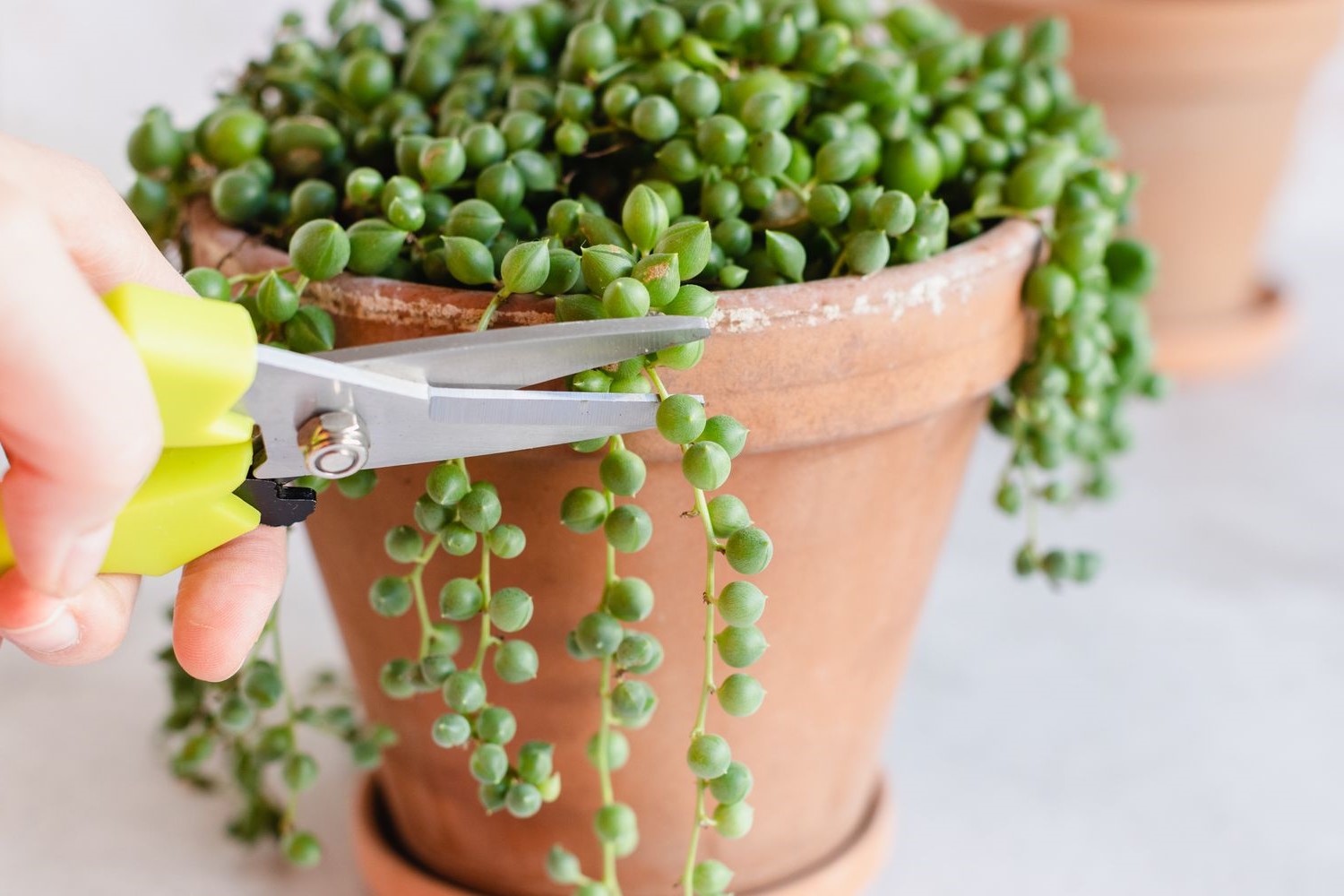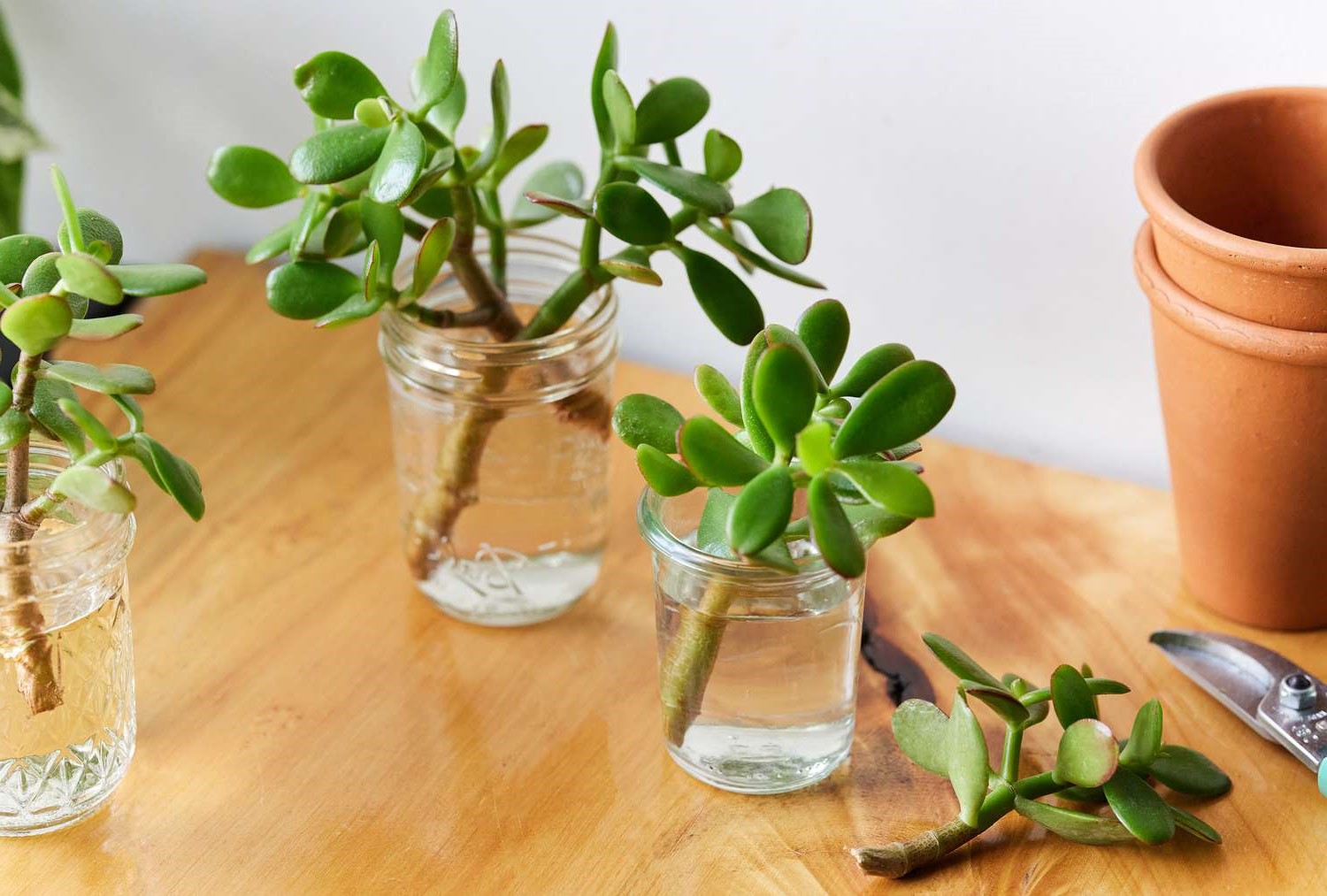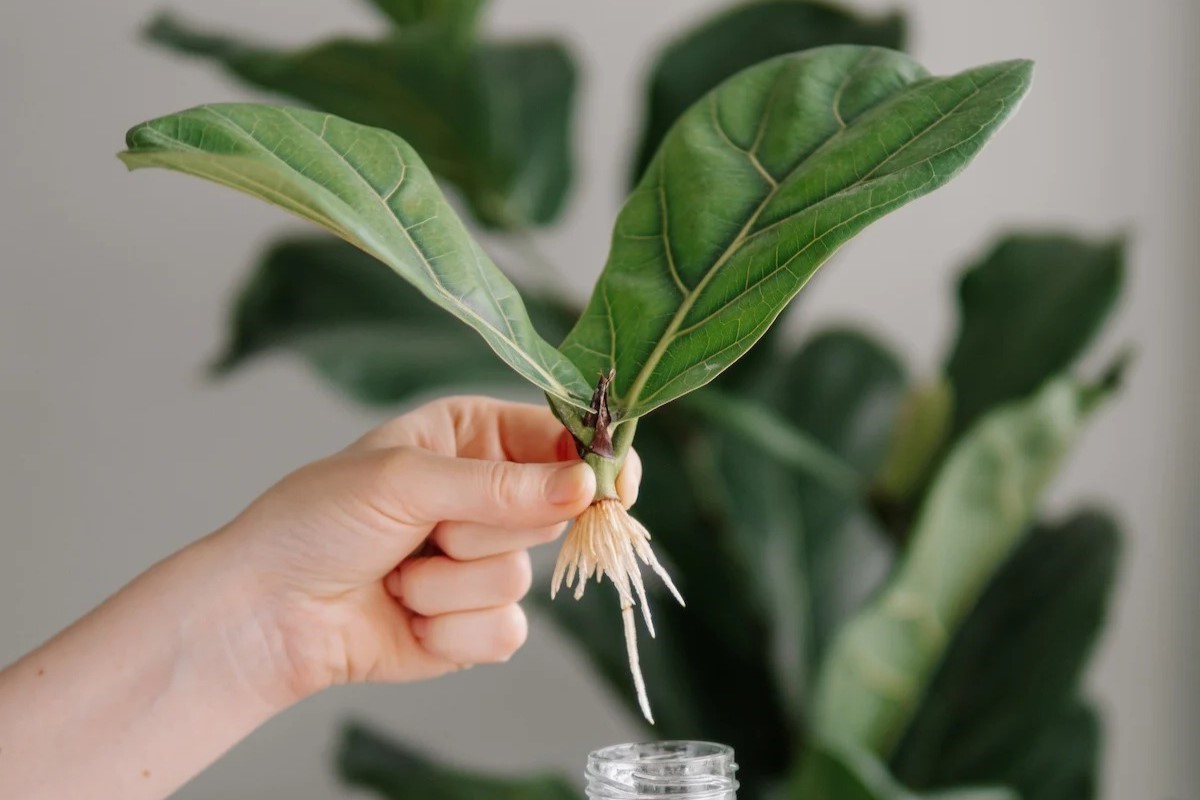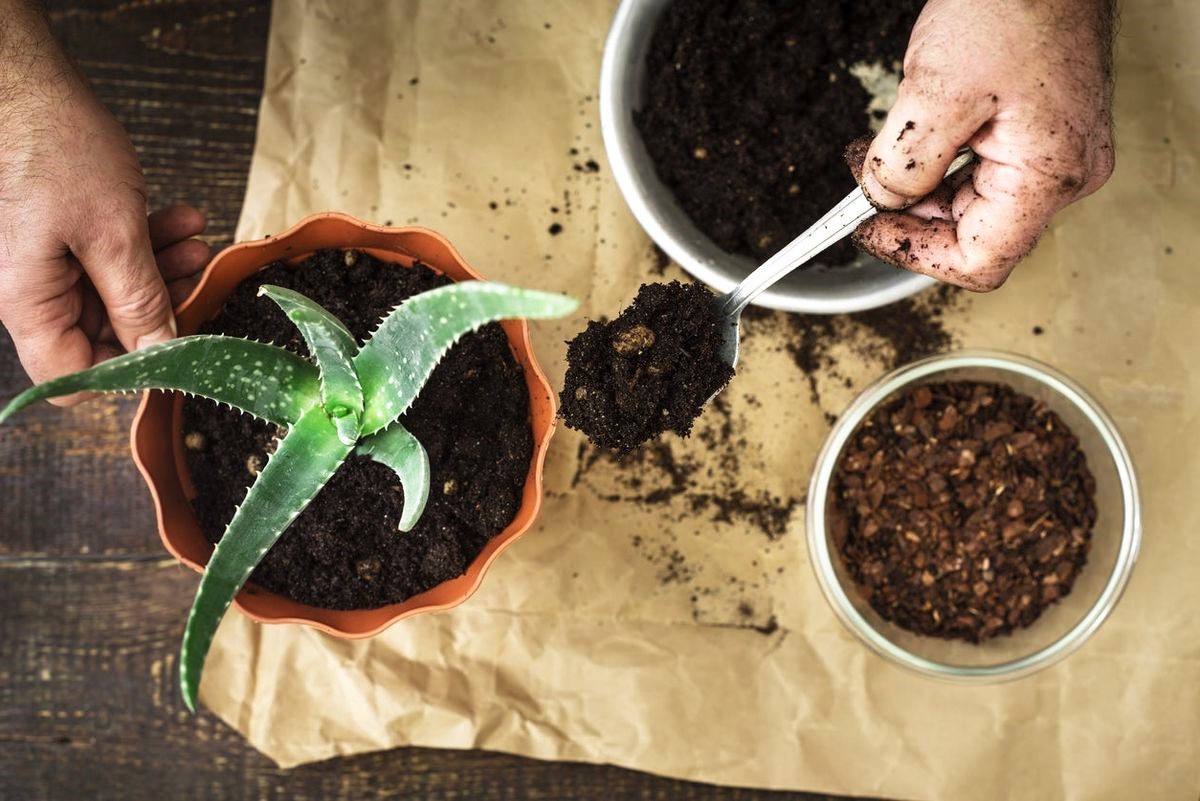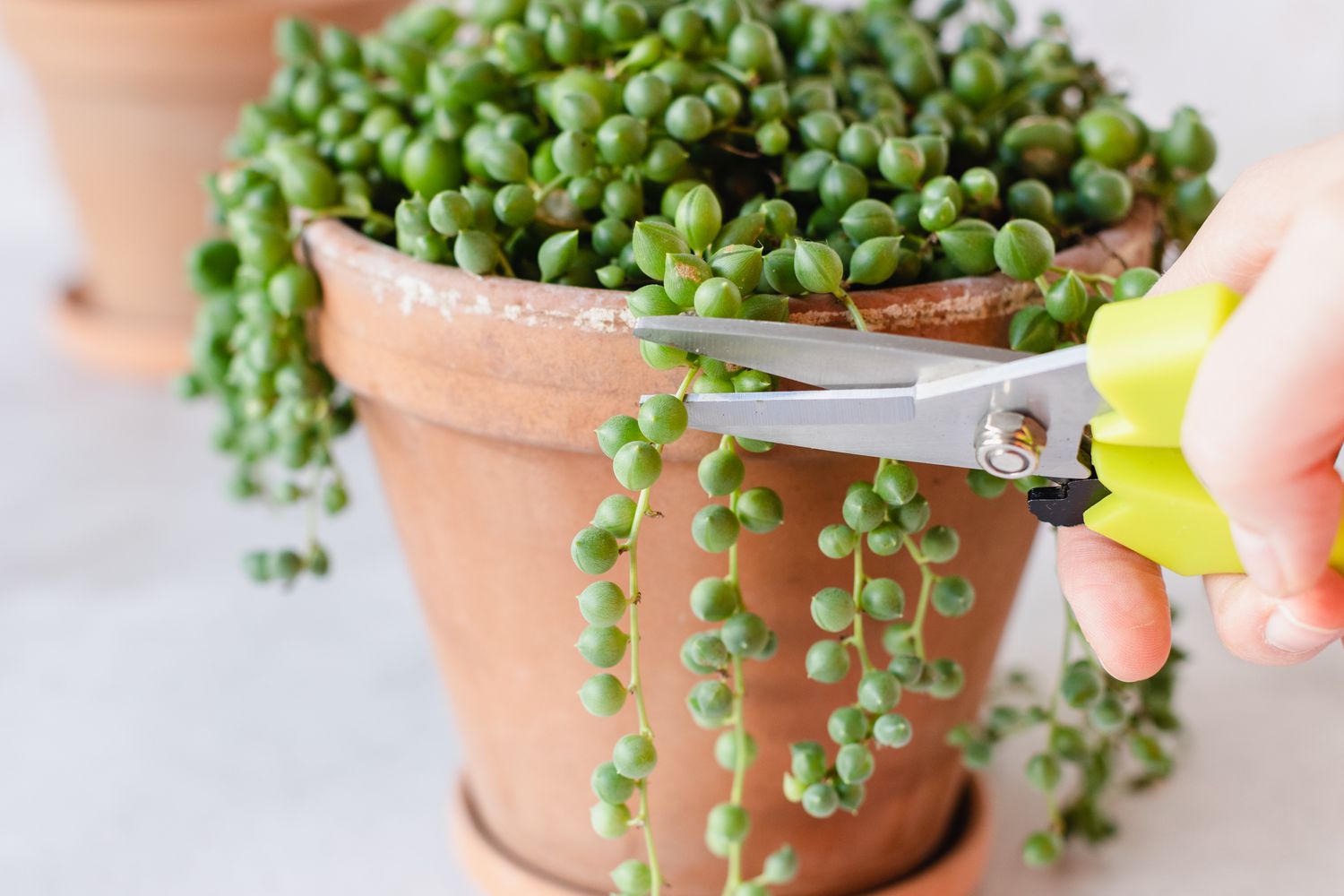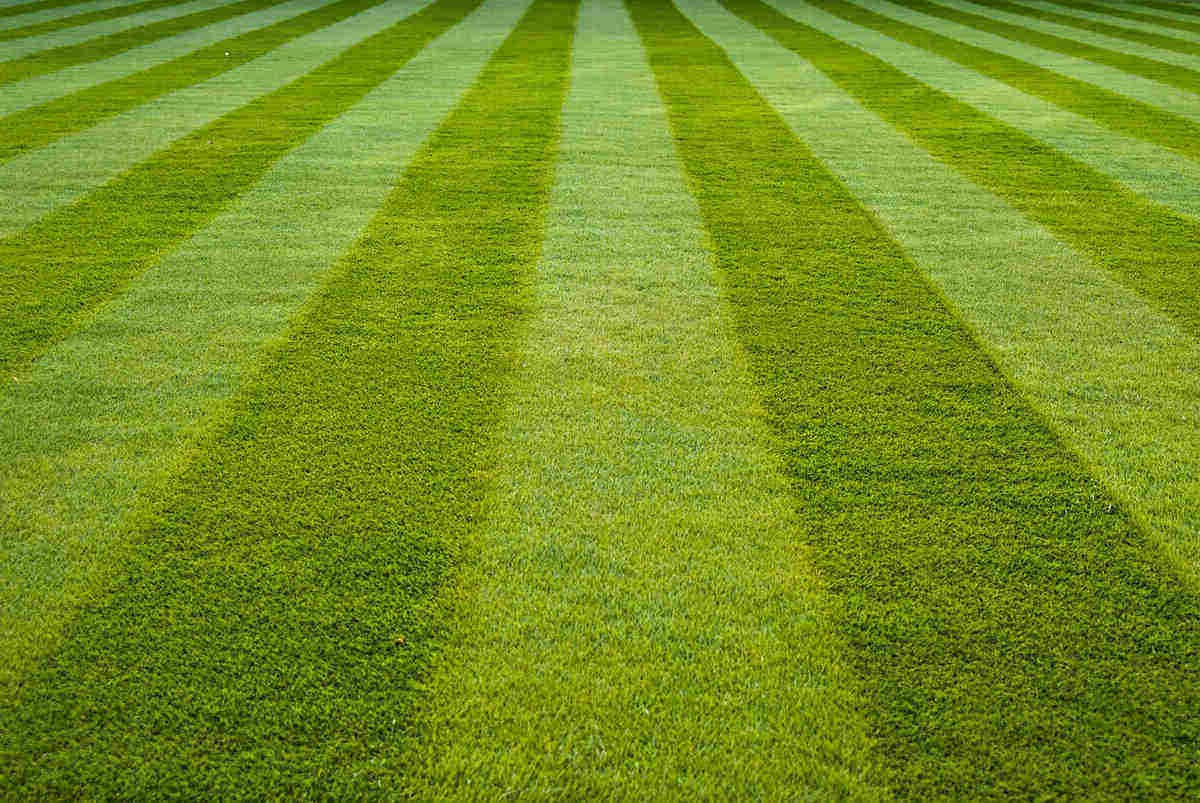Home>Home and Garden>How To Propagate Aloe
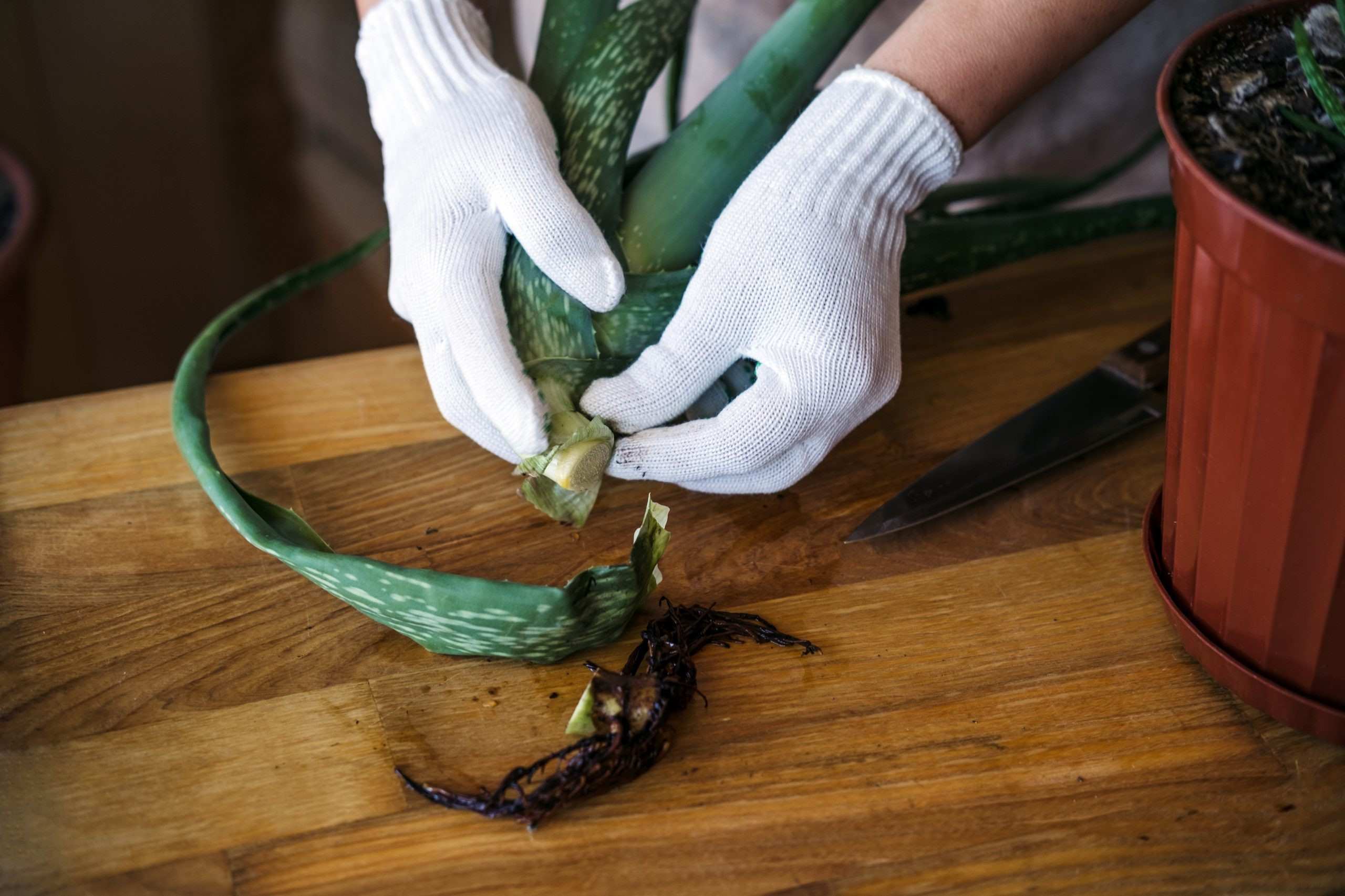

Home and Garden
How To Propagate Aloe
Published: March 2, 2024
Learn how to propagate aloe plants at home with our expert gardening tips. Discover the best methods for successful aloe propagation in your garden.
(Many of the links in this article redirect to a specific reviewed product. Your purchase of these products through affiliate links helps to generate commission for Noodls.com, at no extra cost. Learn more)
Table of Contents
Introduction
Aloe, with its striking succulent leaves and remarkable healing properties, is a beloved plant that has found its way into countless homes and gardens. Its resilience and low maintenance make it a popular choice for both seasoned gardeners and beginners alike. One of the most rewarding experiences for any aloe enthusiast is propagating new plants, allowing them to expand their aloe collection and share the beauty of this versatile plant with others.
Understanding the art of aloe propagation is not only a fulfilling endeavor but also a practical skill that enables individuals to nurture and cultivate new life from existing plants. Whether you're a gardening enthusiast looking to expand your aloe collection or a novice eager to embark on a rewarding horticultural journey, learning the ins and outs of aloe propagation is a valuable and enriching pursuit.
In this comprehensive guide, we will delve into the fascinating world of aloe propagation, exploring the various methods and techniques that can be employed to propagate new aloe plants. From offsets and leaf cuttings to seeds, each method offers a unique approach to cultivating new aloe specimens. Additionally, we will discuss the essential care and nurturing required for newly propagated aloe plants, ensuring their successful growth and development.
Join us as we embark on a journey through the art of aloe propagation, uncovering the secrets to successfully propagating and caring for these remarkable plants. Whether you're a seasoned gardener or a newcomer to the world of horticulture, this guide will equip you with the knowledge and confidence to propagate and nurture thriving aloe plants in your own home or garden.
Read more: How To Propagate Rubber Plant
Understanding Aloe Propagation
Aloe propagation is the process of creating new aloe plants from existing ones, allowing gardeners to expand their collection and share the beauty of this versatile succulent. Understanding the principles of aloe propagation is essential for anyone looking to delve into the world of horticulture and cultivate thriving aloe specimens.
Aloe plants can reproduce through various methods, including offsets, leaf cuttings, and seeds. Each method offers unique advantages and challenges, providing enthusiasts with a diverse range of options for propagating new plants. By understanding the intricacies of aloe propagation, individuals can harness the plant's natural ability to regenerate and multiply, creating a flourishing aloe garden with an array of unique specimens.
Furthermore, aloe propagation presents an opportunity to witness the remarkable resilience and adaptability of these plants. As gardeners nurture new aloe plants, they gain insight into the intricate processes of growth and development, fostering a deeper appreciation for the natural world. Additionally, the act of propagating aloe plants fosters a sense of connection with nature, allowing individuals to actively participate in the cycle of life and contribute to the preservation of these remarkable succulents.
Moreover, understanding aloe propagation involves recognizing the specific requirements and conditions that facilitate successful plant reproduction. From providing optimal soil conditions to ensuring adequate sunlight and moisture, each aspect of propagation plays a crucial role in nurturing healthy and robust aloe plants. By delving into the nuances of aloe propagation, individuals can develop a profound understanding of the plant's needs and behaviors, enabling them to create an environment conducive to successful propagation.
In essence, understanding aloe propagation is not only a practical skill but also a deeply enriching experience that allows individuals to witness the wonders of nature firsthand. By exploring the various methods of aloe propagation and gaining insight into the intricate processes of plant reproduction, enthusiasts can cultivate a deeper appreciation for the resilience and beauty of these remarkable succulents. Whether for personal enjoyment or as a means of sharing the joy of gardening with others, understanding aloe propagation is a rewarding journey that offers endless opportunities for growth and discovery.
Propagation Methods
Propagation methods for aloe plants encompass a range of techniques that enable gardeners to create new plants from existing ones. Each method offers unique advantages and considerations, providing enthusiasts with diverse options for expanding their aloe collection. Understanding these propagation methods is essential for individuals looking to propagate aloe plants successfully and nurture thriving specimens in their home or garden.
Propagating Aloe from Offsets
One of the most common and straightforward methods of aloe propagation is through offsets, also known as "pups." Aloe plants often produce offsets, which are smaller, genetically identical plants that grow adjacent to the parent plant. These offsets can be carefully removed and replanted, allowing for the creation of new aloe specimens. This method is particularly advantageous as the offsets already have a developed root system, increasing their chances of successful establishment. By separating offsets from the parent plant and providing them with suitable growing conditions, gardeners can propagate multiple aloe plants with relative ease.
Propagating Aloe from Leaf Cuttings
Another popular method of aloe propagation involves using leaf cuttings to create new plants. This technique requires carefully removing healthy leaves from the parent plant and allowing the cut ends to callus before planting them in a suitable growing medium. With proper care and optimal conditions, these leaf cuttings can develop roots and eventually grow into mature aloe plants. While this method may take longer than propagating from offsets, it offers the opportunity to create new plants from larger, more established leaves, resulting in robust and healthy specimens.
Read more: How To Propagate Hydrangeas
Propagating Aloe from Seeds
For those seeking a more adventurous approach to aloe propagation, growing aloe plants from seeds presents an exciting opportunity. Aloe seeds can be harvested from mature plants and sown in a well-draining, sandy soil mix. While this method requires patience and careful attention to environmental conditions, it offers the potential for cultivating a diverse array of aloe varieties. Growing aloe from seeds allows for the exploration of genetic diversity and the creation of unique hybrids, making it an appealing option for dedicated enthusiasts looking to expand their aloe collection with distinct and novel specimens.
By understanding and utilizing these propagation methods, gardeners can embark on a fulfilling journey of creating new aloe plants while gaining valuable insights into the natural processes of plant reproduction. Each method offers its own set of challenges and rewards, contributing to the rich tapestry of experiences that come with propagating aloe plants. Whether through offsets, leaf cuttings, or seeds, the art of aloe propagation presents endless opportunities for growth, discovery, and the joy of nurturing thriving succulent specimens.
Propagating Aloe from Offsets
Propagating aloe from offsets, commonly referred to as "pups," is a popular and effective method for expanding an aloe collection. Aloe plants naturally produce offsets as part of their growth cycle, resulting in smaller, genetically identical plants that emerge alongside the parent plant. These offsets serve as a valuable resource for propagating new aloe specimens, offering a straightforward and reliable means of plant reproduction.
The process of propagating aloe from offsets begins with identifying mature offsets that have developed a sufficient root system. Carefully examining the base of the parent plant often reveals these smaller, offshoot plants, which can be gently separated from the main plant using a sharp, sterile knife or pruning shears. It is essential to ensure that the offsets have well-established roots, as this significantly enhances their chances of successful establishment when replanted.
Once the offsets have been carefully removed, they can be transplanted into individual pots or directly into the garden soil. When selecting pots, it is advisable to choose containers with adequate drainage to prevent waterlogging, as aloe plants are susceptible to root rot in overly moist conditions. A well-draining potting mix, specifically formulated for succulents, provides an ideal growing medium for the offsets, promoting healthy root development and overall growth.
After planting the offsets, it is crucial to provide them with optimal growing conditions to facilitate successful establishment. This includes placing the pots in a location that receives ample sunlight, as aloe plants thrive in bright, indirect light. Additionally, maintaining a consistent watering schedule is essential, allowing the soil to dry out between waterings to prevent moisture-related issues.
As the offsets continue to grow and develop, regular monitoring and care are necessary to ensure their well-being. Over time, these young aloe plants will mature and flourish, eventually becoming independent specimens that contribute to a thriving aloe garden. By propagating aloe from offsets, gardeners can expand their collection, share the beauty of these remarkable plants with others, and gain a deeper appreciation for the natural processes of plant reproduction.
In summary, propagating aloe from offsets offers a straightforward and rewarding method for creating new plants, harnessing the innate ability of aloe to produce genetically identical offshoots. This propagation technique not only contributes to the expansion of aloe collections but also provides a firsthand glimpse into the resilience and adaptability of these remarkable succulents. Whether for personal enjoyment or as a means of sharing the joy of gardening with others, propagating aloe from offsets is a fulfilling endeavor that enriches the horticultural experience.
Propagating Aloe from Leaf Cuttings
Propagating aloe from leaf cuttings is a fascinating and rewarding method that allows gardening enthusiasts to create new plants from healthy aloe leaves. This technique offers a unique approach to aloe propagation, enabling individuals to harness the regenerative potential of aloe leaves and cultivate thriving specimens. The process of propagating aloe from leaf cuttings begins with carefully selecting mature, healthy leaves from the parent plant. It is essential to choose leaves that are plump, firm, and free from any signs of damage or disease, as these characteristics indicate the leaf's vitality and potential for successful propagation.
Once suitable leaves have been identified, they can be carefully removed from the parent plant using a clean, sharp knife or scissors. It is crucial to make clean, precise cuts to minimize damage to the leaves and ensure optimal conditions for root development. After the leaves have been carefully detached, they should be left to air dry in a warm, well-ventilated area for a few days. This period allows the cut ends of the leaves to form a protective callus, which helps prevent rot and disease when the cuttings are planted.
After the callusing process, the leaf cuttings can be planted in a well-draining potting mix specifically formulated for succulents. It is important to insert the cut end of the leaf into the soil, ensuring that it is planted at a sufficient depth to provide stability and support for the cutting. Additionally, maintaining a consistent level of moisture is crucial during the initial stages of root development. Lightly misting the soil or using a gentle watering technique can help create a favorable environment for root growth without saturating the soil.
As the leaf cuttings take root and begin to establish themselves, it is essential to provide them with adequate sunlight and warmth. Placing the pots in a location that receives bright, indirect light promotes healthy growth and encourages the development of robust roots. Regular monitoring of the cuttings is necessary to ensure that they are receiving the appropriate care and attention as they progress through the rooting process.
Over time, the leaf cuttings will develop new roots and eventually produce small rosettes, signaling the successful establishment of new aloe plants. This method of propagation offers a unique opportunity to witness the remarkable regenerative capabilities of aloe leaves, providing a firsthand glimpse into the natural processes of plant reproduction. By propagating aloe from leaf cuttings, gardening enthusiasts can expand their aloe collection, cultivate new specimens, and gain a deeper appreciation for the resilience and adaptability of these remarkable succulents.
Propagating Aloe from Seeds
Propagating aloe from seeds offers gardening enthusiasts an exciting and adventurous approach to expanding their aloe collection. While this method requires patience and careful attention to environmental conditions, it presents a unique opportunity to cultivate a diverse array of aloe varieties and explore the genetic diversity of these remarkable succulents.
The process of propagating aloe from seeds begins with harvesting mature seeds from existing aloe plants. These seeds can be carefully collected from the dried flower stalks of mature aloe specimens, ensuring that they are fully developed and viable for propagation. Once harvested, the seeds can be sown in a well-draining, sandy soil mix, providing them with the ideal conditions for germination and early growth.
Creating a suitable growing environment for aloe seeds is essential for their successful development. The soil mix should offer excellent drainage to prevent waterlogging, as excessive moisture can hinder seed germination and lead to fungal issues. Additionally, providing a warm and consistently humid environment can encourage the seeds to sprout and establish healthy root systems.
Placing the seed trays or pots in a location that receives ample sunlight, such as a bright windowsill or a greenhouse, promotes optimal conditions for seed germination. Aloe seeds thrive in warm, indirect light, and maintaining a consistent temperature range further supports their growth and development. Regular monitoring of the soil moisture and environmental conditions is crucial during the germination phase, ensuring that the seeds receive the necessary care and attention as they begin to sprout.
As the aloe seeds germinate and the seedlings emerge, they can be carefully transplanted into individual pots, allowing them to continue their growth and development. Providing the young seedlings with a well-balanced, succulent-specific fertilizer can further support their nutritional needs and promote robust growth. As the seedlings mature, they can be gradually acclimated to outdoor conditions, preparing them for eventual transplantation into the garden or larger containers.
Propagating aloe from seeds offers a captivating journey into the world of plant propagation, allowing enthusiasts to witness the early stages of aloe growth and development. This method not only provides an opportunity to create unique and diverse aloe specimens but also fosters a deeper understanding of the natural processes of seed germination and plant reproduction. By propagating aloe from seeds, gardening enthusiasts can expand their aloe collection, explore the intricacies of plant genetics, and cultivate thriving specimens that showcase the remarkable diversity of these beloved succulents.
Read more: How To Propagate Monstera
Caring for Newly Propagated Aloe Plants
Caring for newly propagated aloe plants is a crucial aspect of ensuring their successful growth and development. As these young specimens acclimate to their new environment, providing them with the appropriate care and attention is essential for fostering robust and healthy growth. Whether propagated from offsets, leaf cuttings, or seeds, newly established aloe plants require specific care to thrive and flourish in their new surroundings.
Upon transplanting newly propagated aloe plants, it is important to place them in a location that receives ample sunlight. Aloe plants thrive in bright, indirect light, making them well-suited for placement near a sunny window or in a garden area with partial shade. Providing the right amount of sunlight is crucial for promoting photosynthesis and ensuring the overall health and vitality of the young aloe specimens.
In addition to sunlight, maintaining a consistent watering schedule is essential for newly propagated aloe plants. While aloe plants are known for their drought tolerance, young specimens require adequate moisture to establish healthy root systems. It is important to water the newly propagated aloe plants sparingly, allowing the soil to dry out between waterings to prevent waterlogged conditions that can lead to root rot.
Furthermore, ensuring proper soil conditions is vital for the well-being of newly propagated aloe plants. Using a well-draining potting mix specifically formulated for succulents provides an ideal growing medium, allowing excess moisture to escape and preventing the risk of waterlogged roots. This type of soil promotes healthy root development and helps protect the young aloe plants from potential issues associated with overwatering.
As the newly propagated aloe plants continue to grow and mature, regular monitoring and observation are necessary to assess their progress and address any potential concerns. Keeping an eye out for signs of overwatering, such as wilting or yellowing leaves, and adjusting the watering frequency accordingly is essential for maintaining the health and vigor of the young specimens.
In summary, caring for newly propagated aloe plants involves providing them with the right balance of sunlight, water, and soil conditions to support their growth and establishment. By offering the appropriate care and attention, gardeners can ensure that these young aloe specimens thrive and develop into robust, mature plants, adding beauty and vitality to their home or garden environment.
Conclusion
In conclusion, the art of propagating aloe plants is a captivating and rewarding journey that offers gardening enthusiasts a wealth of opportunities for growth, discovery, and the joy of nurturing thriving succulent specimens. Whether through offsets, leaf cuttings, or seeds, each method of propagation presents its own set of challenges and rewards, contributing to the rich tapestry of experiences that come with cultivating new aloe plants.
By delving into the world of aloe propagation, individuals gain valuable insights into the natural processes of plant reproduction and witness the remarkable resilience and adaptability of these beloved succulents. The act of creating new aloe specimens not only expands one's plant collection but also fosters a deeper connection with nature, allowing enthusiasts to actively participate in the cycle of life and contribute to the preservation of these remarkable plants.
Furthermore, the propagation of aloe plants provides an avenue for sharing the beauty of these versatile succulents with others, whether through gifting propagated plants or exchanging knowledge and experiences with fellow gardening enthusiasts. This act of sharing not only spreads the joy of gardening but also fosters a sense of community and camaraderie among plant enthusiasts, creating a network of individuals united by their passion for aloe propagation and horticulture.
As newly propagated aloe plants take root and flourish, they bring a sense of vitality and natural beauty to their surroundings, enriching homes, gardens, and indoor spaces with their striking foliage and remarkable resilience. The process of caring for these young specimens instills a sense of responsibility and attentiveness, nurturing a deeper appreciation for the intricate needs and behaviors of aloe plants.
In essence, the journey of propagating aloe plants transcends the act of creating new specimens; it embodies a profound connection with nature, a celebration of growth and renewal, and a testament to the enduring beauty of these remarkable succulents. Whether for personal enjoyment, horticultural exploration, or the simple pleasure of witnessing new life take root, the art of aloe propagation offers endless opportunities for discovery, learning, and the sheer delight of nurturing thriving plants.
